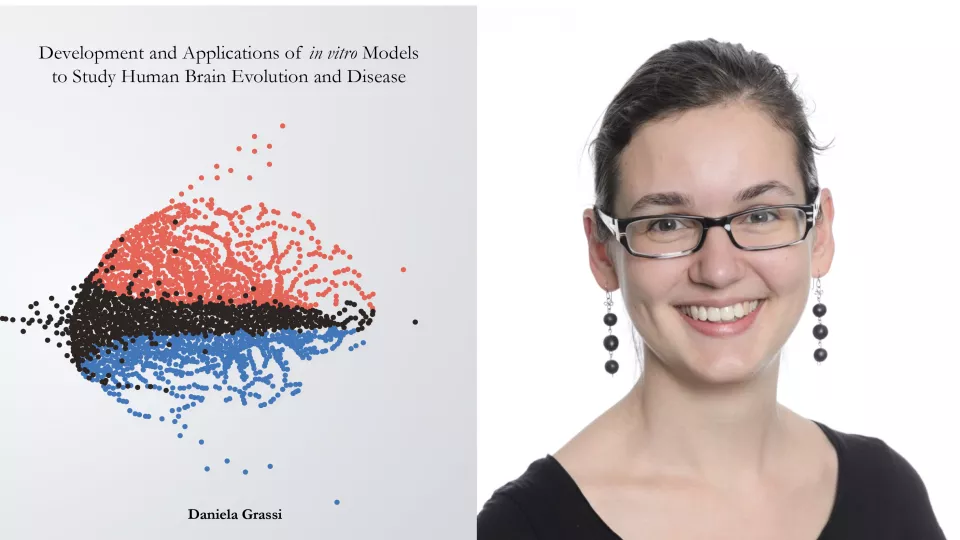Can you tell us about your research?
During my studies, I have been involved in quite a few different projects, but I would say that the overarching theme is the application of in vitro models to study the human brain. The Jakobsson group has, in collaboration with the Parmar lab, developed protocols to either differentiate human induced pluripotent stem cells (iPSCs) into forebrain progenitors, or to directly reprogram patient fibroblasts into induced neurons. We prefer this way of working rather than using animal models because, in the case of neurodegenerative disorders, animal models often do not translate particularly well to humans.
During My PhD, I have been working on two main projects. The first has involved converting fibroblasts from patients with Huntington’s disease (HD) into neurons through direct reprogramming. HD is an inherited disorder that usually emerges in mid-life and is characterised by neuronal dysfunction and degeneration in the striatum and cerebral cortex. The disease is caused by a mutation in the HTT gene, which results in the production of an aberrant version of the huntingtin protein, which is toxic to neurons.
This is a large collaborative project, which I have been working on together with a colleague who is interested in studying autophagy in HD. A process responsible for the removal of unnecessary or dysfunctional components of the cell, we have observed that autophagy is impaired in its later stages in Huntington neurons.
My role has been to demonstrate that we successfully developed neurons from reprogrammed fibroblasts. This was achieved through RNA sequencing, which was compared to proteomics analysis. We observed that HD patients and healthy controls are quite similar at the RNA level, but differ on a protein level. An additional aspect to this project has been the use of CRISPR interference (CRISPRi) to target and knockdown the HTT gene as a potential therapy for HD. Upon a reduction of the levels of huntingtin protein through this method, we observe a partial rescue of the Huntington neurons.
The second project has been the development of a protocol to differentiate pluripotent stem cells into neural progenitor cells. This will be of particular use when studying human brain development and what makes our species special, i.e. why are we more intelligent than other great apes.
In a study recently published in the journal Heliyon, we adapted a protocol from the Parmar group and were able to derive forebrain progenitors from human iPSCs. These are the cells that develop into the cerebral cortex, the part of the brain responsible for higher thought processes such as speech and decision making, of interest at an evolutionary perspective. We then went on to study the expression of long intergenic non-coding RNAs (or lincRNAs) throughout our differentiation protocol. The functions of lincRNAs are as yet largely undescribed, although there are theories that they may be in the control of gene expression and the translation of mRNAs. We were able to identify many previously uncharacterised lincRNAs that displayed dynamic expression during human forebrain neurogenesis. This data is a great resource and could be of particular importance in the study of neurodevelopment disorders, such as Autism and Schizophrenia.
How did you end up doing a PhD at Lund Stem Cell Center?
From an early age, I was interested in research and science. During high-school I decided that I wanted to study neuroscience. I went on to participate in the Preparatory Program at Lund University, which was structured as a semester that included lectures and workshops, and some experience working in a research lab. I chose to work in the Jakobsson lab, as I thought it was a really interesting mixture between neuroscience and genetics. I started my PhD just a few weeks after finishing the program.
How has the Coronavirus pandemic been affecting how have been working?
Luckily I have been able to work from home as I have been writing my thesis. In terms of my defence, I have had to rearrange a lot of things on quite short notice. This has included finding a new opponent for my defence, as my original opponent was from northern Italy. There has been a lot of uncertainty.
What are your plans for after you defend your thesis?
I will be working in the lab until mid-April and then during the summer I have a project working as a freelance medical writer. I am excited to see how that goes!
What is the best thing that Lund Stem Cell Center has to offer?
The Research School in Stem Cell Biology here at the Stem Cell Center is great. The courses, seminars and workshops that they offer are really good. It’s a very useful resource to have throughout your studies, and helps put everything into context. You get to know other people in the Stem Cell Center who may be working in completely different research areas to you, but still have overlapping interests.
Daniela will be defending her PhD thesis titled “Development and Application of in vitro Models to Study Human Brain Evolution and Disease” on Thursday 23rd April at 09:00 at Segerfalksalen BMC A10 or by Zoom: https://lu-se.zoom.us/j/221230404.
Her opponent is Associate Professor Jens Hjerling-Leffler from Karolinska Institute.


